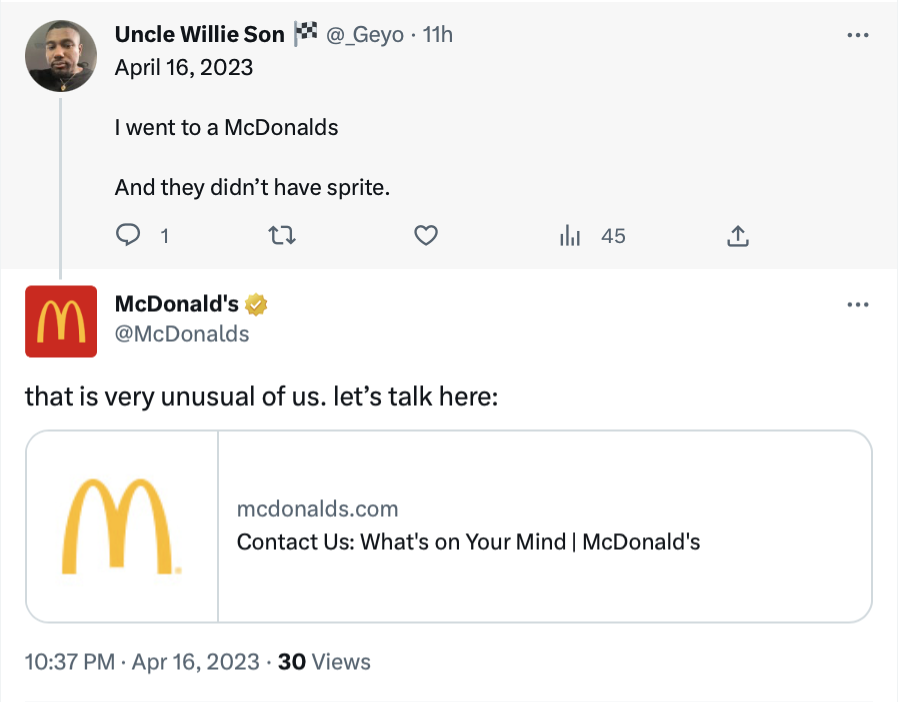What is Social Listening?
Social Media has bridged the gap in the way we communicate with others within and beyond our social circles, especially when it comes to sharing important news and information at the speed of light. As we discussed in previous blog posts, social media is a tried and true tool for marketing and promotion but more importantly, it can also provide some pretty powerful insights such as an in-depth analysis of customer behaviors. This practice, known as social listening, has grown to be a critical aspect of market research and is making its way into the toolbox of most digital marketing professionals and businesses of all sizes.
Social Listening is essentially acting like a fly on the wall. You’re privy to the discussions that are being had about your product or service on different social media platforms. You take note of every comment, mention, retweet, share, specific keyword, hashtags, etc. It is a very nuanced process that uses various methods to accumulate real-time data which is then analyzed and deciphered into customer opinions, preferences, purchasing habits, and behaviors. From that point on, marketing professionals and business owners can make data-driven decisions that can augment their products, services, and marketing strategies. Moreso, social listening can help you recruit potential influencers or brand ambassadors for collaboration, keep a watchful eye on the competition, and keep up with the general landscape of digital marketing.
Social listening may look a little something like this:


Social listening doesn’t just focus on engagement on a superficial level; instead, the main components to take note of when analyzing social media engagement of this nature are sentiment, context, and tone as it will help you gain a better understanding of your customer’s motives and emotions. There are additional perks to social listening that you can use to the benefit of you or your client’s brand. Let’s get down to it, shall we?
Real-time Data
Customer opinions, feedback, testimonials, and the like can be assessed in real-time. Social listening not only allows you to instantaneously gather helpful insights with real-time data but allows you to address a question, concern, and bad or good comments with swiftness.
Customer Feedback
Social listening is a way of extending customer service through unconventional means. Not only does it look good from a PR standpoint but the advantages are quantified as well. A whopping 71% of consumers who have had positive interactions with brands on social media were eager to spread brand awareness to their inner circle. Another study shows that engagement over social media may motivate customers to spend 20% to 40% on companies.
Competitor Analysis
Social listening allows businesses to monitor and benchmark against their competitors. By analyzing competitor conversations and on social media, businesses can gain insights into their strengths, weaknesses, and market positioning, which can help them develop effective strategies to outperform their competitors. This is best done by implementing and setting up monitoring social listening tools – which we will get into a bit later.
Product Development
Social Media listening can inspire creativity and ingenuity. By picking up customer needs, preferences, and pain points, you can use the information to develop or improve commodities that they deem useful and increase customer demand.
Opportunities for Collaboration
You may encounter customers with a decent or huge following advocating for your brand and you may not even know it. While it may seem that Macro-influencers may have the most pull with a following of over 100,000, Micro-influencers with a following between 1,000 to 100,000 strong are often the loudest with their brand advocacy despite being considered small fry, and the loyalty from their following will likely be bestowed onto you since they’re are considered more genuine with product endorsements compared to larger public figures. Here’s a quick refresher about the stronghold they have on social media influencing.
Enhanced Marketing Strategies
You combine all of these perks, and what do you get? A phenomenal marketing strategy that’ll push you ahead of the curve. However, let’s get into specifics. You can’t execute without a game plan and the appropriate tools.
So how does one leverage the power of social listening to create a flawless strategy?
Define Your Objectives
Before embarking on social listening, businesses need to define their objectives and what they hope to achieve through social listening. It could be understanding customer sentiment about their brand, tracking competitor mentions, identifying customer pain points, recruiting influencers, gathering insights for product development,or generating new leads. Defining clear objectives helps align social listening efforts with business goals and ensures a focused approach.
Choose the Right Social Media Monitoring Tools:
There are numerous social media monitoring tools available in the market that can help businesses track and analyze social media conversations effectively. It is crucial to choose the right tool that aligns with your business requirements, budget, and social media platforms that are relevant to your industry. Some popular social media monitoring tools include:
- Brandwatch
- Hootsuite
- Sprout Social
- and Mention
Brandwatch Dashboard
Set up Relevant Keywords and Filters
To effectively listen to social media conversations, it is important to set up relevant keywords and filters that are related to your brand, products, industry, competitors, and relevant hashtags. This ensures that you capture all the relevant conversations and mentions related to your business and industry, and filter out the noise. Experiment with different variations of keywords and hashtags to capture the most relevant conversations.
Monitor Multiple Social Media Platforms
Social listening should not be limited to just one social media platform. Customers may mention your brand or share their opinions on various social media platforms such as Twitter, Facebook, Instagram, LinkedIn, YouTube, blogs, and forums.
Analyze, Identify, & Engage
Analyzing customer sentiment is rather straightforward. We can pretty much tell when someone leans towards something or is against it, right? Whether you’re checking your dashboard or manually skimming through your feed/timeline, heed the discussions that revolve around your brand including – as much as it may sting – scathing reviews or lack of engagement. Good or bad, strike while the iron is still hot; jump at the opportunity to prolong your favorable PR or extinguish the critics by quelling their concerns or complaints right on the spot. And if you can get an edge on your competitors through a little spying and find a brand ambassador in your heaps of mentions, then you are well on your way.
In Conclusion
In conclusion, social listening is a powerful market research and customer insights tool that can help businesses gain valuable insights into customer sentiments, preferences, behaviors, and market trends. Leveraging social media listening can help businesses develop effective strategies to enhance their products, services, and customer experiences and allow them make data-driven decisions that will make them stay ahead of the competition in today’s dynamic business landscape. With the right approach and utilization of social listening strategies, businesses can unlock valuable insights from social media conversations, and use them to their advantage to drive business growth and success.



